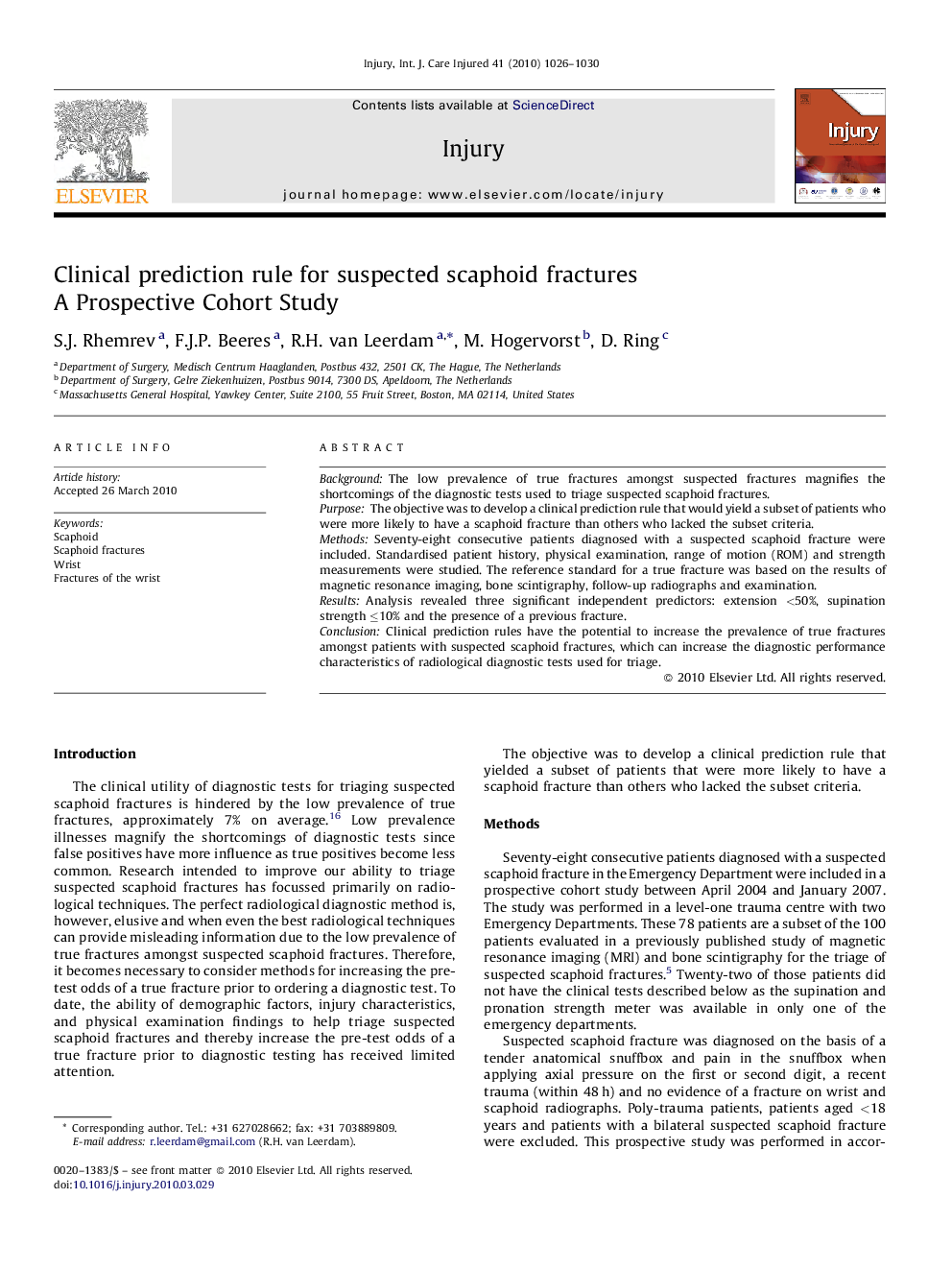| Article ID | Journal | Published Year | Pages | File Type |
|---|---|---|---|---|
| 3240018 | Injury | 2010 | 5 Pages |
BackgroundThe low prevalence of true fractures amongst suspected fractures magnifies the shortcomings of the diagnostic tests used to triage suspected scaphoid fractures.PurposeThe objective was to develop a clinical prediction rule that would yield a subset of patients who were more likely to have a scaphoid fracture than others who lacked the subset criteria.MethodsSeventy-eight consecutive patients diagnosed with a suspected scaphoid fracture were included. Standardised patient history, physical examination, range of motion (ROM) and strength measurements were studied. The reference standard for a true fracture was based on the results of magnetic resonance imaging, bone scintigraphy, follow-up radiographs and examination.ResultsAnalysis revealed three significant independent predictors: extension <50%, supination strength ≤10% and the presence of a previous fracture.ConclusionClinical prediction rules have the potential to increase the prevalence of true fractures amongst patients with suspected scaphoid fractures, which can increase the diagnostic performance characteristics of radiological diagnostic tests used for triage.
